Note: All the images in this post are Nancy Beiman’s authorship.
Nancy Beiman is a director, character designer, teacher, and animator.
I met Nancy Beiman in 1989. We were both hired as Senior Animators for the first Amblimation’s feature film, Fievel Goes West (An American Tail). The company, created by Steven Spielberg in London as a Universal Pictures’ division, would give birth years later to Dreamworks Animation, moving part of the crew to California.
We were both hired as Senior Animators at the very beginning of the studio, most of the desks yet empty. After a few months, we both would actually work as Supervising Animators, taking care of a lot of young assistants. Those were times of Animation reborn, after almost three decades of decline, really few schools, and it was necessary to prepare artists with none or almost none previous experience in animation.
Nancy, born in New Jersey, USA, lives today in Toronto, Canada, after had worked also in Paris, Berlin, New York, Los Angeles, and Sydney. For Disney, she did animation supervision and development for films as A Goofy Movie, Hercules, and Treasure Planet. Among others, she also worked for Warner Brothers Animation and ran her own company with partner Dean Yeagle (Caged Beagle.)
Not only a very talented artist, but also an animation scholar, Nancy wrote two formative books on animation, Prepare to Board and Animated Performance. Not by chance, she is today one of the main teachers at Sheridan College’s Animation department.
Observed by the lovely regard of her two cats, Sam-E and Louie and the memory of the ineffable Gizmo*, Nancy generously answered my questions:
Iludente: Today we finally see more and more women doing very well in animation, as directors, animators, show runners, heads of department, ETC. But when we met in London 27 years ago, most of the women were still confined in the ink and paint department. Did you deal with too much prejudice in your career?
Nancy: A great deal. That’s the main reason why I worked outside of Hollywood for much of my career. European countries were fairer to female animators. And studios in New York were more open than the ones in L.A.
Iludente: Any particular story you would like to tell us about that?
Nancy: I worked with producers who were equal opportunity employers such as Jack Zander, Gerhard Hahn, Greg Ford and Stephen Spielberg. Most male artists were very accepting since they judged me as an artist rather than as a woman. Others were not.
Iludente: Were there many other women studying animation in your times of Cal Arts?
Nancy: Only two were in that first class. One dropped out nearly immediately and Leslie Margolin (Gorin) left after two years, with a certificate. I was the only female student in the senior class after that. Some more female students were admitted in the following years and most had long careers in the industry.
Iludente: Do you think other women today working with animation are conscious on how you helped to open the doors for them?
Nancy: I don’t know and frankly I don’t see that as something I did anyway. To me, the real trailblazers were people like Lillian Friedman Astor, Selby Kelly, LaVerne Harding, Retta Scott, Tissa David, and Ruth Kissane.
Iludente: Usually when people write about women pioneers in the animation world, they mention Mary Blair or Lotte Reiniger. I see those two more as exceptions that prove the rule. You are mentioning other names. Can you tell more about these women?
Nancy: Mary Blair was not an animator and Lotte Reiniger worked in a vacuum; she had no influence whatever on American animation.
The women I mention should be better known because they worked on films along with the men and are now totally forgotten. Lillian Friedman Astor animated at Fleischer’s on Betty Boop cartoons and was the first female theatrical animator in the USA. LaVerne Harding started animating for Walter Lantz in 1935 under the name Verne Harding (she had to masculinize it!) and worked for him until the 1960s. Very little is known about her except that she redesigned Woody Woodpecker in the fifties and appeared on Lantz’s TV show. Selby Daley Kelly mixed the paint on Snow White (because they would not hire her in animation) but after leaving Disney during the 1941 strike, organized one of the TWO animator unions and was its second President! She also ran a studio with her husband Roger Daley before marrying Walt Kelly. Retta Scott you should know from the credits of Bambi. She is the first woman to get animation credit on a Disney feature film. The second woman to be credited on a Disney theatrical production was ME, forty years later. A very shabby record. Tissa David was Grim Natwick’s assistant when he worked in New York and became the best known female animator of her generation, working for the R.O Blechman studio and Richard Williams well into her eighties. She died in 2014 and she received much less attention than male animators do. Ruth Kissane left Disney in 1959 because she was not receiving credit as an animator and promptly animated the titles to It’s a Mad Mad World which of course is only ascribed to Saul Bass.
But of course, people keep rabbiting on about Nine Old Men. There are no Nine Old Women. Tissa David, Selby Kelly, Candy Kugel, Yvette Kaplan, and Linda Miller were my contemporaries. There were other female animators at the time whom I did not know or work with. An entire generation of female animators has been ignored by studios who are now trumpeting about the ‘lovely young women’ working for them today. Those two adjectives are very telling. Animation should not be about what you are, or what you look like, or how old you are, but about what you do. Male animators are not judged by their looks, or anyway, shouldn’t be. The only thing that should matter is what is on the screen. Sadly that still doesn’t seem to be the case.
Iludente: You met a lot of today’s mythical artists, as Chuck Jones, Tex Avery, Shamus Culhane, Bob Clampett, Emery Hawkins, Selby Kelly, Ken O’Connor, Friz Freleng, Lillian Astor, Retta Scott, T. Hee, Ralph Bakshi, the Nine Old Men and a lot of others. Since the sixties, and especially in the seventies and early eighties, animation was declining, leaving back the golden age. Financial advisors would tell investors to stay away from animation. When you decided to become an animation artist, times were very different than today. All those incredible artists you met in the past, did ever any of them predict that animation would come back with so much power as today?
Nancy: No. Mike Maltese was despairing about it when he visited our school. I believe that only T. Hee was positive about it returning. Our teachers at Cal Arts didn’t want their knowledge to die with them, which is why they taught.
Iludente: Which is the best advice you think you did receive from any of them?
Nancy: The most encouragement I got was from Ollie Johnston after our very first student screening: “Stick with it. We need more female animators!” (Said to me in 1976!)
Iludente: What made you choose animation as a career?
Nancy: I loved being able to create and ‘act’ characters who were not like me. The acting and storytelling appealed to me from the start more than anything else.
Iludente: Did anyone in your family or any close friend try to change your mind?
Nancy: No. Quite the opposite. We are an artistic family. My father was a symphonic musician who loved animated cartoons and who was responsible for introducing me to people who got me into this profession. Without him, I would not be an animator. And the family was delighted that I chose an artistic career; it was seen as an honorable profession, and the Disney name (attached to Cal Arts) made it even more important to them, since both parents loved Disney films.
Iludente: Do you think that today’s animation industry lacks the charm and creativity of the early times? Or animation is progressing?
Nancy: The animation is technically better today. Animation is a wildly successful medium. An accountant told me that animation and science fiction were the two most successful film genres of all (although he would never recommend that his clients invest in a film!) You no longer need a distributor thanks to the Web, you can see films from all over the world with the click of a mouse. The computer programs make it cheaper to produce hand drawn or independent film than ever before. Film festivals for animation are held all over the world.
But feature animation is largely a corporate business now that animation has become a major profit generator (and more animated features are made than ever before). I do not believe that it is as much fun to work in animation now as it once was. The business mentality takes precedence over the art and stories and characters are seen as products, or ‘franchises’, a word that I hate when it is applied to art. FRANCHISE describes restaurants that serve identical products, and the same thing results when it is applied to film.
I prefer independent animation where the artists’ voice is very clear. Some of the best films today are coming from outside the big studios.
 Iludente: When we started, animation books were rare. I remember Phil Nibbelink still carrying with him the Preston Blair’s one. Today there is all kind of animation books. What do you believe is unique in the two books you wrote?
Iludente: When we started, animation books were rare. I remember Phil Nibbelink still carrying with him the Preston Blair’s one. Today there is all kind of animation books. What do you believe is unique in the two books you wrote?
Nancy: There were no books on feature storyboards when I began teaching; everything that was in print was designed for either television or live action. Prepare to Board was unique and, I am told, is still the only book that deals with feature animation boards. It’s also the only one to combine character design with storyboard, since both are created at the same time; character design always works within a story context, and storyboards can’t be drawn without characters.
Animated Performance covers acting in animation, which is very different from live action performance; it is not emphasized in most other books (only Frank and Ollie really speak of it, and that purely in a Disney context). There is only one other book on the topic and it is not written by an animator.
Iludente: When you see a new film, do you still have the same pleasure you had when you were a teen or a child?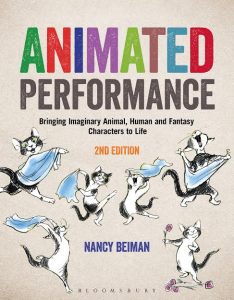
Nancy: It depends on the film! I still get pleasure from the films that I watched when I was young. I enjoy the new ones when they are good.
Iludente: When you want to have pleasure or fun or fulfill your spirit with Art, do you go for animation or is there any other art form that you prefer?
Nancy: I love music. I also love all kinds of art, and find inspiration with everything. But if I really want to fill my spirit with Art I either go for a bike ride or play with my cats, who are living works of art.
Iludente: If you had to choose one short and one feature as the two best animation films ever made, which would be and why?
Nancy: I won’t ever answer this question because it is not possible to compare independent feature films with studio feature films. Or independent short films with studio made short films. Or American films with Canadian or Russian or Chinese or French films. Or stop motion films with CGI with hand-drawn films. It’s like asking me ‘what is the best music in the world’? I have many films that I love, but how do I rate them numerically? They are all Number One.

Hahn Film Berlin’s photo includes such famous animators as Andi Knight (center), Borge Ring (right of Andi) and most of the Danish animators from A-film; Gerhard Hahn has the black hair and glasses. (Berlin, 1988)
Iludente: You directed films of all kinds, from very authorial short films to commissioned works for the industry. You also animated for different directors and companies. Which director you worked with you felt more pleased?
Nancy: I liked working on the productions with Gerhard Hahn in Berlin since I did not have a preconceived notion of the characters and could have fun with them.
Iludente: Which attitude you expect from a good director?
Nancy: He must know what he wants and communicate this to the artists. (I have never worked with a female director other than myself.)
Iludente: Which scenes or sequences you had animated, you think are the peak of your animation career and why?
Nancy: Again, that’s hard to tell, but I think my strongest acting appears in An American Tail: Fievel Goes West when Miss Kitty talks to Tanya Mousekewitz in her dressing room. I also really enjoyed animating Snoopy and Spike (Snoopy’s brother) for Bill Melendez. These are radically different styles of character and animation, but both gave me a chance to act and have fun with the characters. I think that my new film, Old Tricks, will give me a chance to show some fun acting and crazy comedy, the stuff I like to do.
Iludente: So you are working right now in the development of a new short film. What did move you to start a new film?
Nancy: Art. As we know, art isn’t for pleasure; it is a compulsion. I’d toyed with the idea of making a film but animation takes so long, I wanted to really have a solid story. I have that story now, and the film wants to be made.
Iludente: What more can you tell about this new film?
Nancy: It will be hand drawn; I’m not sure whether it will be on a computer or not. I only use technology when it helps me and doesn’t hinder me. Scanning drawings from paper ostensibly takes longer but I may have more control over the drawings. That aside, some of the scenes have very little animation; so I may combine two methods and do only the heavier scenes on paper.
Iludente: You have a great experience with animation, but you also have a deep experience with your own life. You moved to live in very different places in the world and you had to deal with solitude many times because of that. You learned to make new friends in different cultures and you had to be open to understand and to accept values different from yours. What do you think really made who you are?
Nancy: All that stuff you just mentioned.
Iludente: Why do you think you have worked in so many different places and countries?
Nancy: It gave me a chance to see the world when I did not have a lot of money, it showed me the way different people lived, it gave me a chance to work with wonderful artists from other countries, and most importantly, most of the time I had an equal chance with the men for lead animator positions.
Iludente: For you, what is life all about?
Nancy: It’s just a bowl of cherries. Don’t take it seriously.
* The ineffable (and deceased) Gizmo, as Nancy asked me to remark it.
Céu D’Ellia, September 19, 2016
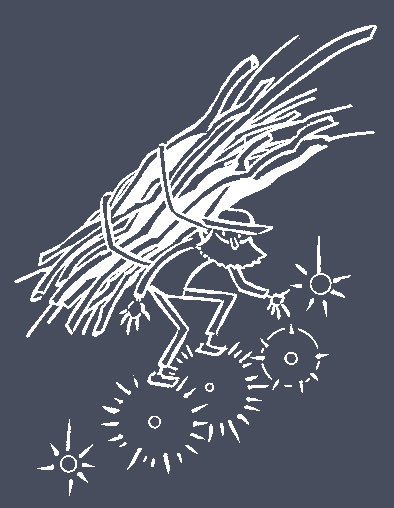


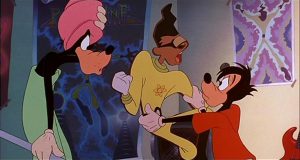
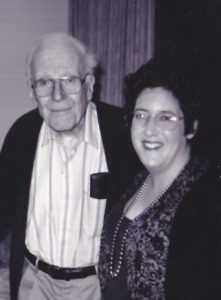
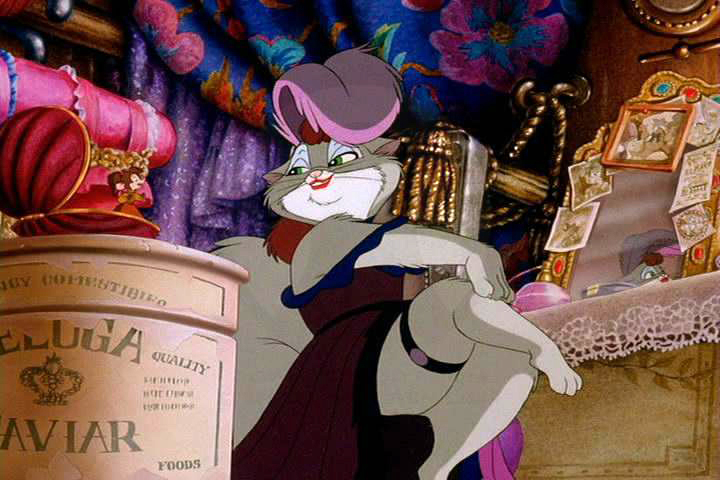
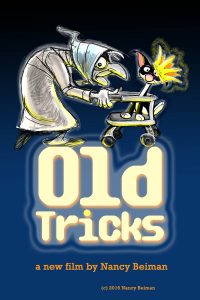
Mantriix
July 5th, 2019 /
Wonderful Article. Good Job.
Lottery Sambad Night
March 20th, 2020 /
Nice article thanks for sharing keep it up
Lottery Sambad Night
March 27th, 2020 /
Nice blog and interesting information thanks for sharing
Btysun
May 4th, 2020 /
Its very amazing blog site . I want to know your other information. thank’s for sharing
Son Lotus
June 19th, 2020 /
Thanks, nice article
Son Lotus
June 19th, 2020 /
Thanks, Nice article!